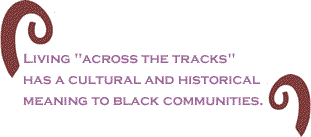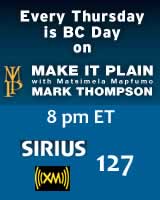
|
||||||||||||||||||||||
|
||
 |
||
The Crenshaw/Expo Line light rail project, part of Metropolitan Transit Authority's (MTA) long awaited railway to the LAX Airport, finally "turned dirt" this week, nearly twenty five years after it was first proposed. Rail transit has been a kicker for economic development throughout the region. It will be the largest economic development project in the history of South Los Angeles, at $1.7 billion dollars and will create 7,800 jobs in one of the most economically depressed areas of the city. This "on again, off again" segment of the MTA 30 year transit expansion strategy was "off the (priority) board" as recently as two years ago. Los Angeles County Supervisor, Mark Ridley-Thomas, made it a priority upon his election in November, 2008, and within his first year of office (and back on the MTA board) got the Crenshaw/Expo line "upgraded" from a bus line to a rail line last December. So, exploratory soil drilling started this week to ascertain exactly how to environmentally plan the line, plan the stops and create the greatest economic impact for the community.� It might also be a good idea to begin the station stops and grade separation discussion, if the desire is to maximize economic development capacity in a historically underserved community.
The new rail dilemmas are always about cost, as it always seems that environmental and public safety issues that affect other people seem to be ignored in poor and minority communities.� At grade simply means ground level. Subterranean grade (below ground) and above grade (above ground) are more expensive but has a greater economic impact on a community due to the fact that the structural barriers for the rail line doesn't impact commercial retail development. Commerce tends to shy away from communities where at grade rail lines exist because the traffic access is lower due to the inability to cross the tracks. Furthermore, issues of crossing rails and endangering pedestrians are mitigated because the tracks are out of the way of pedestrians. The big fight in the other light rail that touches the tip of the black community (the Expo line to the sea) was that at grade rails were built where above grade rails were merited. Even as the design of the Expo line is being challenged in the courts, the construction of the line continues to be at grade level. The primary consideration for urban rail lines has always been cost, not safety. The Expo Line is a prime example of this as the rail line passed a middle school and a high school. The politics of light rail development seems to change, depending on what side of town you live on. Supervisor Ridley-Thomas is looking to change all that. He is on record demanding that the entire Crenshaw Line be built above grade so not to doom the future economic development prospect of the Crenshaw community. It's a great call and one that doesn't have the community chasing the horse after its out of the barn (like on the Expo line).
The next issue always plaguing urban rail development is whether "to stop" or "not to stop." Where railway bypasses the community, again is where economic opportunity bypasses the community. If people don't get off the train, commerce gets no customers and jobs don't come to the area. Mass transit is a job stimulus and rail transit stops are key traffic stimulants. The Crenshaw/LAX has been developed without a stop in the Leimert Park, a cultural enclave that needs the traffic flow. Due to actually break ground in 2012 or 2014, the Crenshaw community is determined to change the design of the light rail line to include a Crenshaw/Leimart stop. The stop is the discussion taking place now that the Creshaw line has been the green lighted. Both where the Crenshaw Line runs and where the Crenshaw Line stops should, and will, be at the center of community focus. The community made sure it got done. Now we all have to make sure it gets done right. BlackCommentator.com Columnist, Dr. Anthony Asadullah Samad, is a national columnist, managing director of the Urban Issues Forum and author of Saving The Race: Empowerment Through Wisdom. His Website is AnthonySamad.com. Click here to contact Dr. Samad. |
||
If you would like to comment on this article, please do so below. There is a 400 character limit. You do not need a FaceBook account. Your comment will be posted here on BC instantly. Thanks. Entering your email address is not mandatory. You may also choose to enter only your first name and your location.
|
||
Thank you very much for your readership. |
||
| Any BlackCommentator.com article may be re-printed so long as it is re-printed in its entirety and full credit given to the author and www.BlackCommentator.com. If the re-print is on the Internet we additionally request a link back to the original piece on our Website. | ||
| |
||
March 18, 2010 |
| Executive Editor: David A. Love, JD |
| Managing Editor: Nancy Littlefield |
| Publisher: Peter Gamble |
| Est. April 5, 2002 |
| Printer Friendly Version in resizeable plain text format |
 |
 |
 |

|
 |
| |
| |

















































